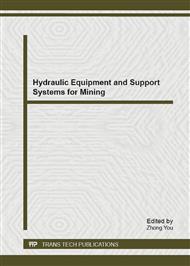p.512
p.518
p.522
p.531
p.536
p.541
p.545
p.553
p.557
Preparation and Tribological Properties of Nb1-xTixSe2 Micro/Nanoparticles
Abstract:
Nb1-xTixSe2 (x=0~1) micro/nano-particles have been successfully prepared via solid-state thermal (750°C) reaction between microsized Nb, Ti with Se powders under seal environment in a seal quartz tube and characterization by X-ray diffractometer and scanning electron microscopy. It was found that the morphologies of the as-prepared products changed from microplates to micro-nanoparticles or aggregations composed of layer structure with the doping of Ti. And the amount of regular hexagonal microplates evidently reduced and nanoscaled particles increased with the increase of the contents of Ti dopant within a certain limit (1-20 atwt. %). The tribological properties of the as-prepared products as additives in paraffin were investigated by UMT-2 multispecimen tribotester. By the addition of Nb1-xTixSe2 micro/nanoparticles in paraffin, the antiwear ability was improved and the friction coefficient was decreased. The paraffin with Nb1-xTixSe2 micro/nanoparticles showed better tribological properties than that with pure NbSe2. A combination of the molecule-bearing mechanism of sliding friction, and fill in-repair work between the rubbing surfaces can explain the good friction and wear properties of Nb1-xTixSe2 micro/nanoparticles.
Info:
Periodical:
Pages:
536-540
Citation:
Online since:
December 2012
Authors:
Price:
Сopyright:
© 2013 Trans Tech Publications Ltd. All Rights Reserved
Share:
Citation:


